Converted Bus That Will Make Your Current Apartment
Life
1. Changing The Usual
Jessie Lipskin was tired of being stuck in the dul and the over-prized city life in Manhattan. She wished to design a lifestyle for herself and provide her far more freedom than she already has. Freedom means to her financially, holistically and sustainably. Then she searched around on eBay and she decided to make the purchase of a lifetime.
After a time when Jessie can't shake the idea of buying an old derelict bus in order to make it into her very own lifestyle, she decided to go for it. However she wasn't aware of the finding the right bus was going to be the least of her problems.
At 27 years old, Jessie Lipskin had spent the majority of her life in the hustle and bustle of New York City. She had only one chance to get a brief interval with upstate for college. Yet for all the glamor that the Big Apple had to offer, it was admittedly a difficult place to live in.
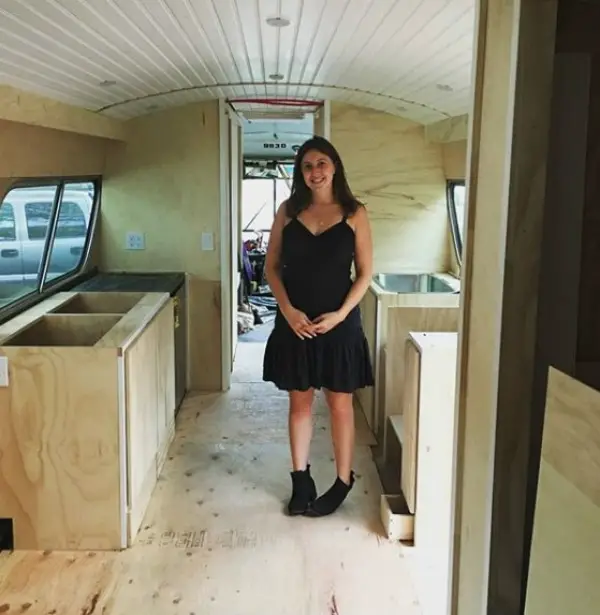
Jessi saw people struggling to accommodate the needs of their everyday lives, working really hard just to afford a living space. It was all around her. She wanted to have an another way and then she discovered this wild idea. Packing up her life and taking it on the road are seemed tempting for her. At the time she didn't realize that her vision would represent the Do It Yourself (DIY) project of a lifetime.
2. Modernity And Mother Nature Can Meet
When Jessi had been a student at Binghamton College where had its own nature reserve right nearby, she realized that Manhattan does not have nature, at least her home does not. She developed a true love for being able to have nature right her own doorsteps, as the campus had its. She wanted to have an environment in nature on a regular basis.
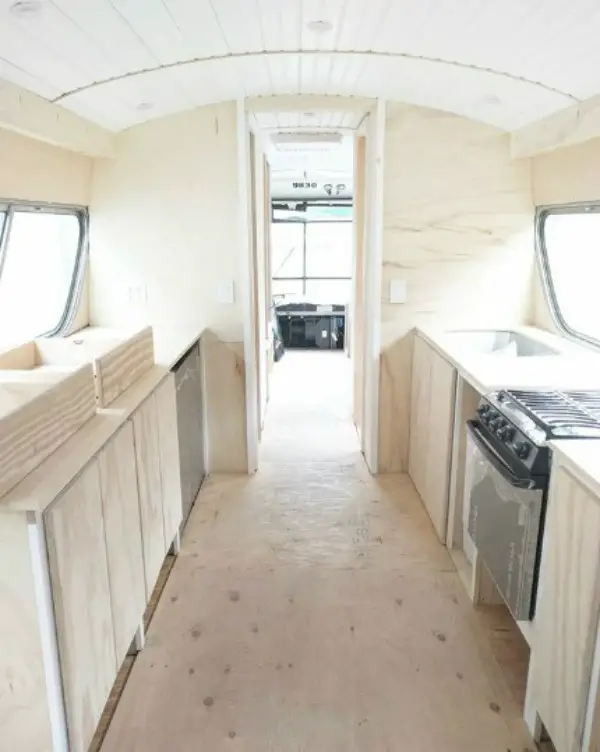
Jessie wanted to have the freedom that allow her to be surrounded by nature all the time but she also wanted to enjoy the comforts of a modern life. She just needed to get two of them together. However, no one around her had ever tried something like this before. She began to research the idea on the internet and make plans about how to do it.
3. A Critic From Everyone
When Jessie Lipskin decided to convert 1966 Greyhound bus into mobile home, she faced so many problems like having neither a construction experience nor driver's licence. It was a daring idea for her. And when she spoke to her friends and loved ones about it not every one could agree on her vision.
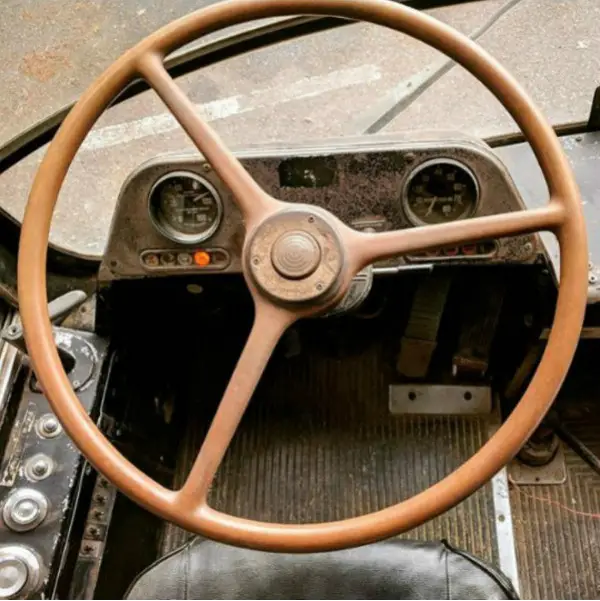
Some of people that Jessie talked the idea about, not exactly supportive, especially her mother. Jessie stated in the interview with ABC News “My mom thought I was crazy. She would tell all the people in her apartment building: ‘My daughter is buying a bus to live in.'”
4. Inspiration of Garbage Warrior
Jessie has a passion to travel, so she decided the building her own mobile home from nothing. First thing she had to is to figure out what kind of mobile home she wanted to create. She looked to Garbage Warrior for inspiration which is a documentary film.
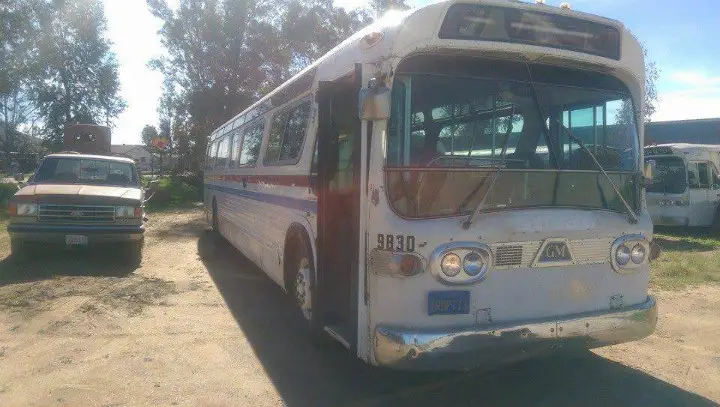
At the Garbage Warrior, you can explore alternatives for sustainable living ideas. Jessie decided to have an eco-architect, utilizing recycled materials to make a home, which was the filmmaker's idea. After decided to what kind of lifestyle she wanted, it was time to find the right vehicle. Unluckily she settled on was far bigger vehicle than she had initially dreamed of.
5. Dreams of Her Ride
Jessie had several vehicle options ro start with her home dream. First, she looked at the classic design of an RV but it didn't attract her, in fact she found it lacking of aesthetic. Then she decided to take a vintage bus and smarten it up to her likes.
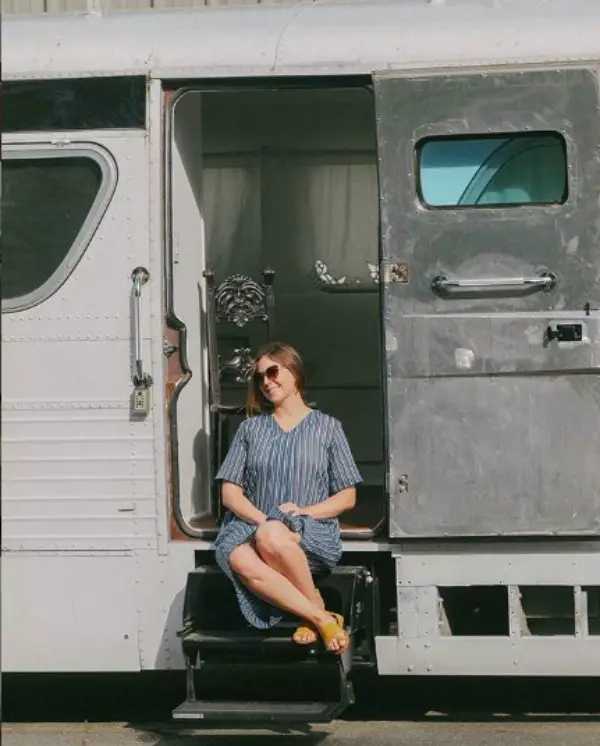
Only a converted bus could be able to actualize her dreams. So she went back to the internet for finding the right vehicle. Finally she found what she wanted which was about $7,000 on eBay. After purchasing the vehicle, it was about the time to get to work. But before that, she came across to some obstacles that she would have to deal with first.
6. The 1966 Greyhound Bus
Jessie decided to make a house from 1966 Greyhound. Interestingly, it was the same bus model that Keanu Reeves and Sandra Bullock have to save in the film Speed. The bus was contained 400 square feet of possibility. Turning a vintage car into a house, would be difficult than she was expected.
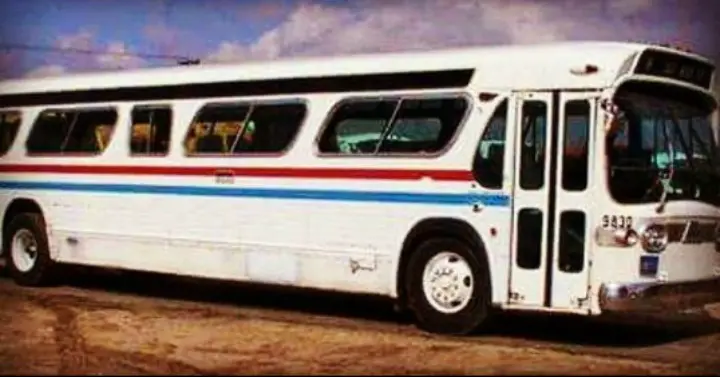
The bus she founded was in California, but she was in New York. She would need to drive across the country to get the vehicle so she could begin the process of making into a converted bus home. Believe or not it was the minor problem, she had bigger problem to solve.
7. The Greatest DIY Project
Jessie had a problem that she realized to late. Even tough she had the coolest idea for house, she couldn't drive because she didn't have a driver's licene. When she was living in Manhattan, she trusted the public transportation. Beside the fact that she didn't have a driver licence, she also didn't know how to drive stick-shift in order to maneuver the converted bus.
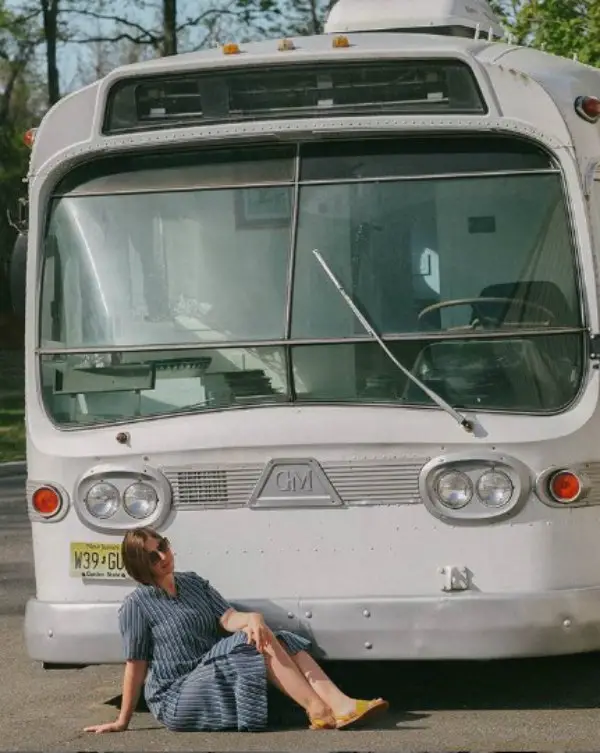
While Jessie learning how to drive, her friends drove the buss all the way from Perris, California to the East Coast. To begin with, Jessie rented a spot in Upstate New York, where she could create a baser and get to work. And the remodelling DIY project began.
8. A Clean Slate
Jessie needed to create a space within the bus, so her and her friends stripped out all the seats that it had come with and sold them to a restaurant. Hereby they started the renovation of bus. After that, they had an empty skeleton of bus to rebuild to their heart's content.
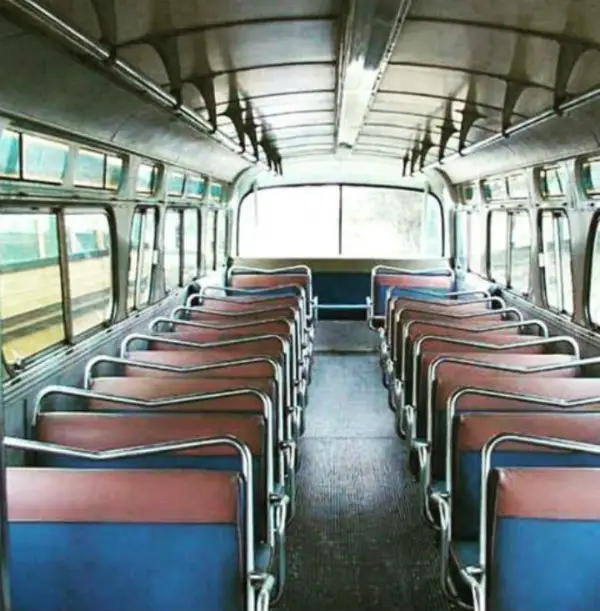
In order to cover bus' grime, Jessie decided to paint the bus to a fresh metallic white pain. But in order to further attempt for the course, Jessie needed more help than her friends because removing old seats and painting the bus were easy gigs. Building the actual home would mean bringing the experts.
9. Needing An Expert Touch
Jessie wanted this project to be a DIY project and depend on her strong vision. However she didn't have enough construction experience to convert this bus into a proper mobile home with all the amentities and appliances. At least, this converted bus would need its own self-powered air conditioning, plumbing and electrical systems.
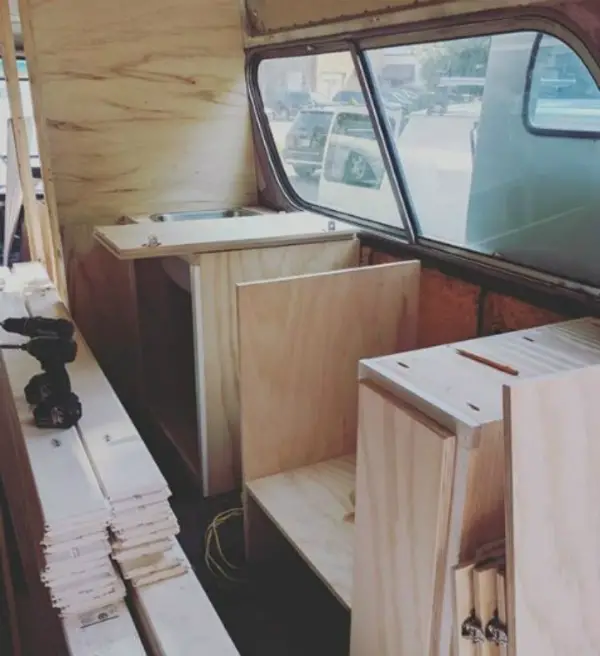
Jessie wanted to make this bus into a space that she could actually live, and that would mean a complete reform of the bus interior. She had to decide so many things like layouts of different rooms that would be created by skilled carpenters. So Jessie decided to assemble a work them including her friends. They all brainstormed the idea that how the converted bus should look.
10. Figuring Out Custom Configurations
To start the building stage, they needed to decide far more than just deciding what whould be where. The real challenge in constructing home inside the bus was the calculations which were needed to be correct in order to make it work. Also whatever was built had to remain fixed while the bus was moving around.
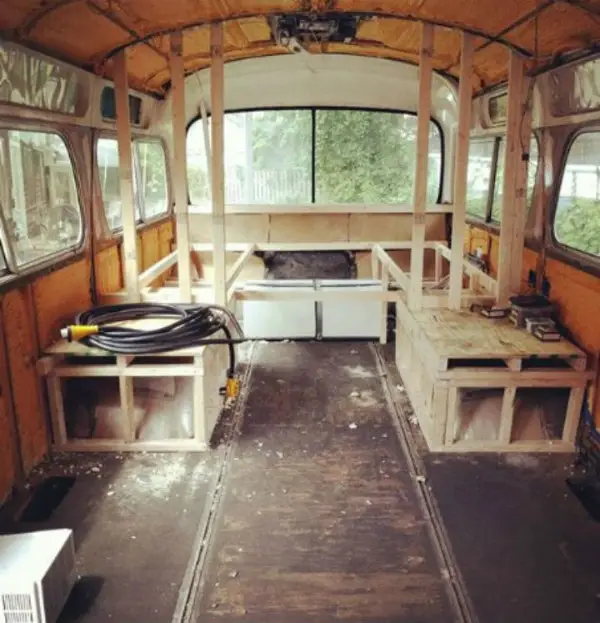
The calculations had to be perfect including the proper angles for each structure with the utmost precision. Only that way, doors would open or close as they should to, even if the parking angle was slightly off-kilter. All this process needed to add extra time to the woodworking and hereby the project overall. Jessie's dream house finally began to take shape.
11. Sustainable Infrastructure
The bathroom inside the converted bus would have to be sustainable. The converted bus had high ceilings and that's why they were able to to construct a fully functional standing shower. Even though, the floor was a slotted floor that were made by mahogany wood, for the bather to stand on to dry off.
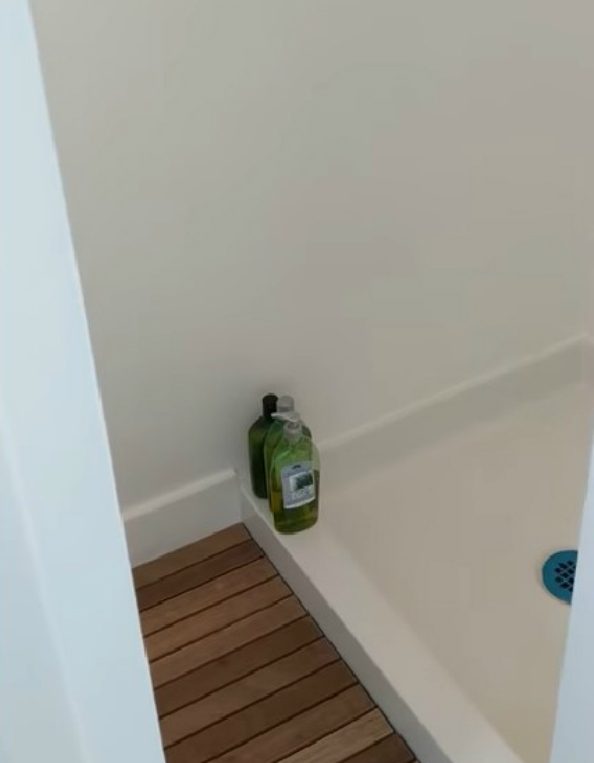
The purpose of the slotted floor was that the shower water could drip down through the boards. Then, the water would be channeled into a gray water tank mounted on the vehicle’s underside. This was the best way to recycle water resources Jessie’s home had. But what about a space for her belongings?
12. Electric Ladyland
The team of workers that Jessie hired, installed the electric system for the converted bus. Beside the LED system which were nice to have, the bus needed different appliances needed to be installed, which required electric system. Jessie needed to purchase so many appliances like a refrigerator, a washing macine, a spin dryer, a hot water heater and a propane tank.
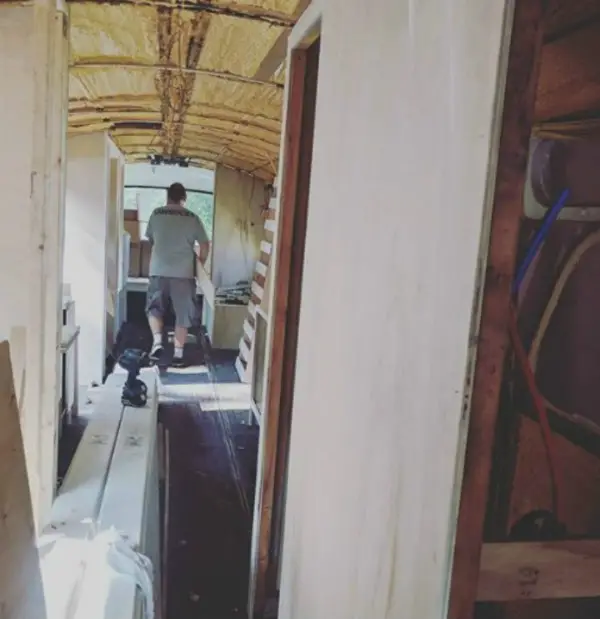
Jessie had her all decision by making proper research. Jessie carefully choosed her appliances with her initial vision of being energy efficient and Earth conscious for her tiny home. Of course her friends helped her to instal the appliances. And I must say one feature in particular was especially delightful.
13. Cooking With A View
Jessie had a great advantage that it came with the bus. She could cook while enjoying the view around her, right in front of her face. While team of experts were constructing, Jessie had a chance to learn some of the things and she had a chance to take part in building the kitchen's wooden countertops.
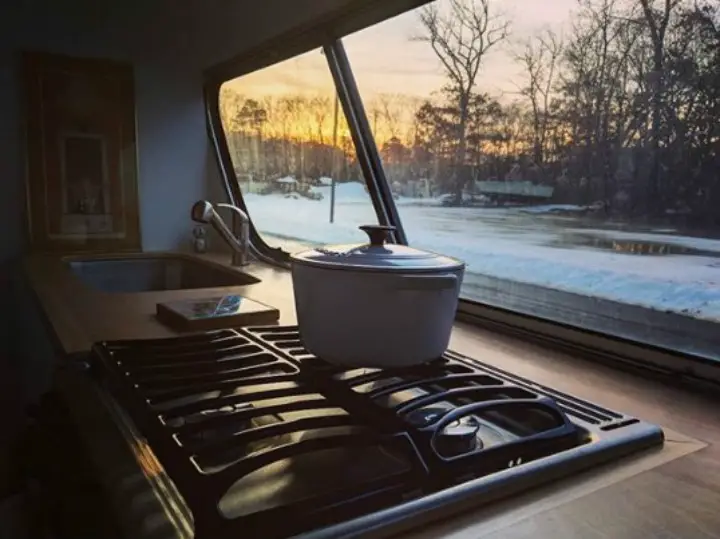
Jessie's converted bus had a most amazing kitchen with a fully equiped appliances, perhaps even better than many of the Manhattan apartments. Her new kitchen had a space for fully functional equipments like state-of-the-art stovetop, and even had a corner for its own oven. Jessie finally had all the space that she wanted. Her friends and her team of experts were very capable of contributing to her overall vision.
14. Compare And Contrast
Jessie, her friends and her team of experts were redecorated the converted bus into the tiny home. Their work couldn't be named as random. Their all steps were planned according the Jessie's vision. Jessie finally had a dream home but she was open to learning from the design examples of others.
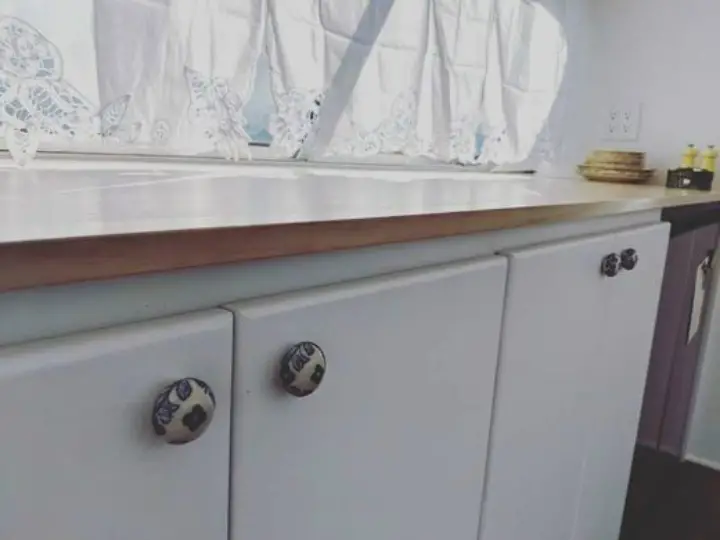
Jessie found inspiration from other people's works like constructing a tiny home in a similar fashion. So she decided to post her home to Instagram in order to inspire others. By one by she documented their own work process too. In a mean while, she had the greatest idea for her bedroom.
15. Optimizing Compact Spacing
The interior space of the converted bus would allow far more space than you think. Jessie needed a closet for her clothes. But not only she had a space to hang her clothes, also she had three more closets for other stuff in total.
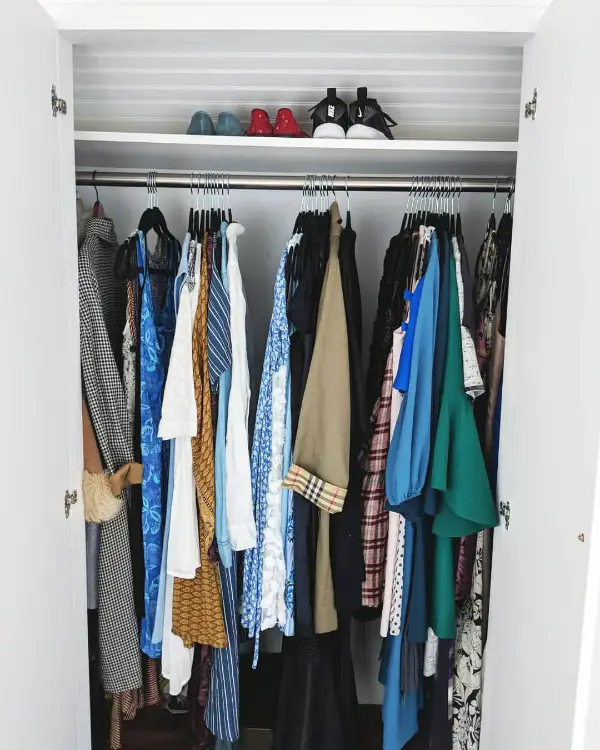
All the floor of the converted bus was covered with a layer of polished hardwood, of course except bathroom. Then they installed a LED lightin system in order to give it a real sense of flair. The lights were installed with dimmers, so Jessi could create different ambiences. .Wtih the lights were finished, all the basics were done. It was time for the heavy lifting.
16. Dreams On Wheels
According to Jessie, the most important part of the house was a comfortable corner where she could rest. After the completing of structure of bedroom, she designed with cozy velvet curtains, and a table at the back of the room. Then she collected her book collection onto it, so that it could be used as the bus's own miniature library and comfortable corner to read.
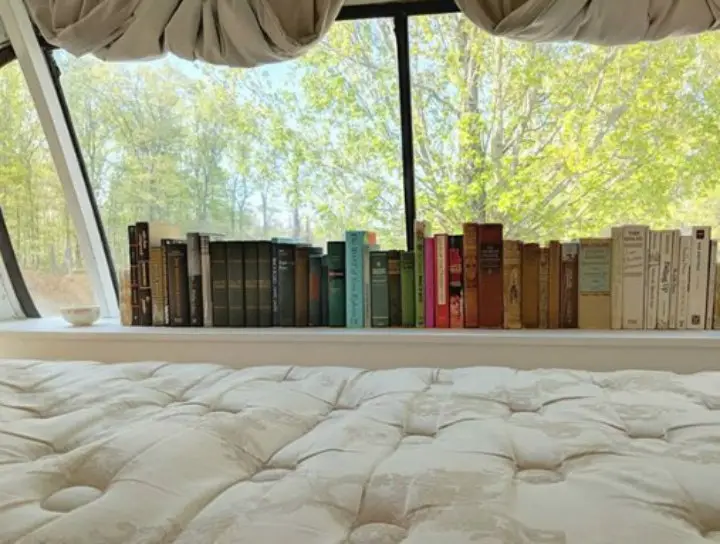
The desing of the her literary corner was that it was just within arm's reach so she wouldn't have to get out of bed to grab a good book and that was the best part for her. In this way she completed the major parts of the converted bus home and now she could go on with the minor details.
17. A Work Of Art
It took three years to finish the converted bus, but once it was finished it was truly a marvel to behold. This unique mobile home was a fully functional, furnished and equipped home and we are sure about that some apartment owners would be jealous of this home. Some of the final features of bus were just amazing lile, the decked out bus boasted two separate air conditioning units, three different walk-in closets, and its entire electricity and water system was environmentally sustainable.
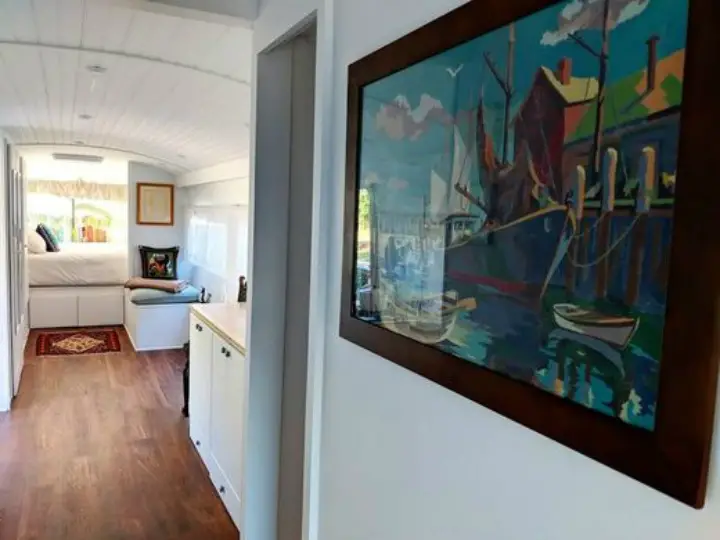
Jessie dreamed of being an owner of her own mobile home that could take everywhere as her heart desired , so she could escape the problems in Manhattan. Now, before setting out on the converted bus’ maiden voyage, it was time to add a touch of personal magic.
18. Magic Of The Final Touch
This mobile home was stunning but still it needed a touch of color to spruce it up. Although Jessie was economical and resourceful, she purchased an oil painting with gentle tones at the Goodwill sale. With this frames the bus looked more delightful.
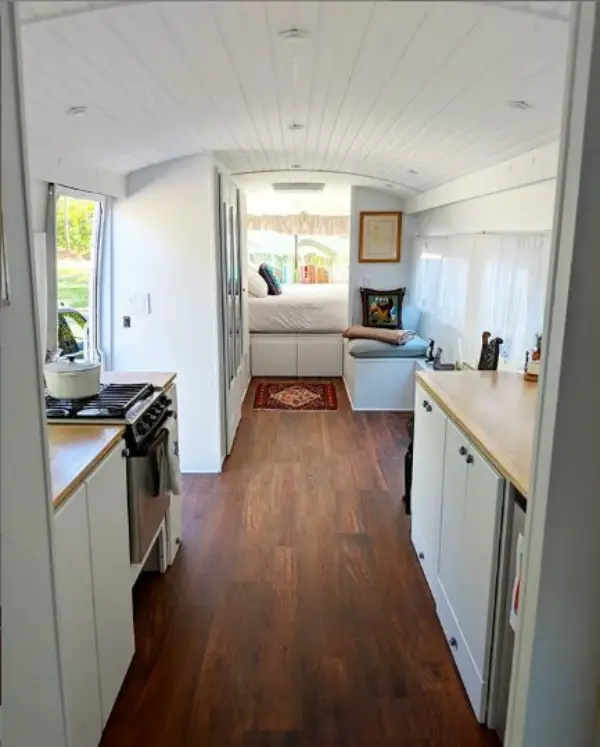
Jessie thought that she could live in everywhere but after three years of work she deserved a space that was more personalized. According to Jessie, it is the little details of desing that she could feel like a home. And one item in particular, of absolutely priceless value, made its way onboard.
19. Precious Plates
Jessie wanted the converted bus to be her own personal sanctuary, so she decided to bring her decorations with immense importance : a set of dishes with its own important history. This was so much more than just a decoration, it was a family heirloom. It was the a way for her to carry her past wherever the road might take her.
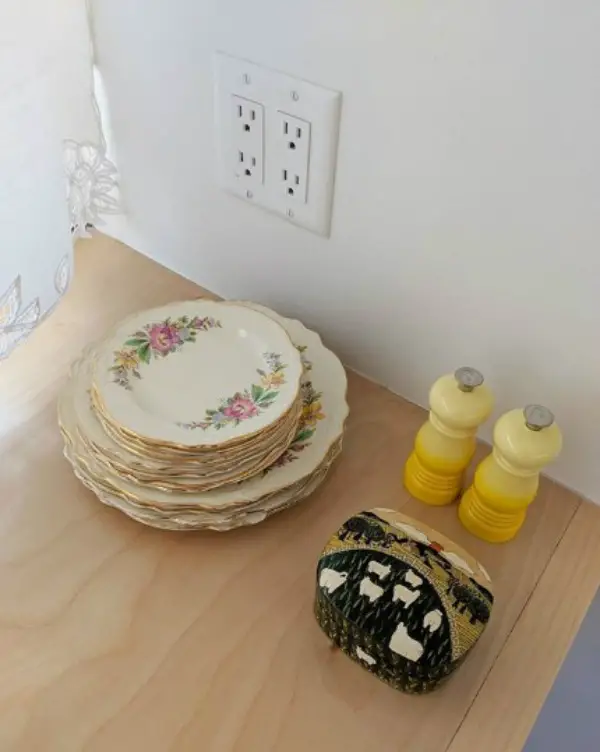
Jessie's great grandmother had lived in the poor immigrant tenement house on Manhattan's Lower East Side. Eventually she had afforded a set of fine china dishes which were clearly a sign of prestige given her surroundings. After passing down through the generations, they were now on the table in Jessie's mobile home. Beside other things that ser her converted bus apart from others, china dishes were important ones.
20. Expert Organizer
Jessie had a great advantage when she set out on her DIY project. Despite the fact that she would not have technical experience for constructions, she had her own skill set that she needed : her natural tendency for being organized. Only with that kind of talent would able to maximize the utility of the space allotted within the confines of the converted bus.
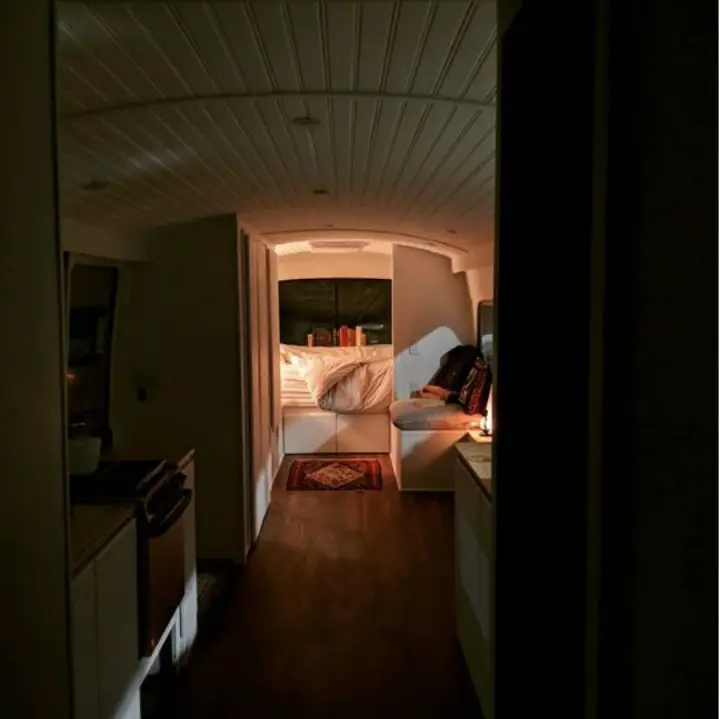
Jessie was good at throwing away any intem that she felt she had no need for. That quality would allow to maximize her personal space in tiny, expensive Manhattan apartment. However she reflected back on the three years of work to convert the old bus into a luxury mobile home, she felt the project had some big drawbacks for her.
21. Be Here Now
As well equipped as it may have seen, Jessie's mobile home did not have all the comforts which you could find in a typical everyday life. For example, there was no television, but according to her it was not a down point, actually she loved the idea that not having one.
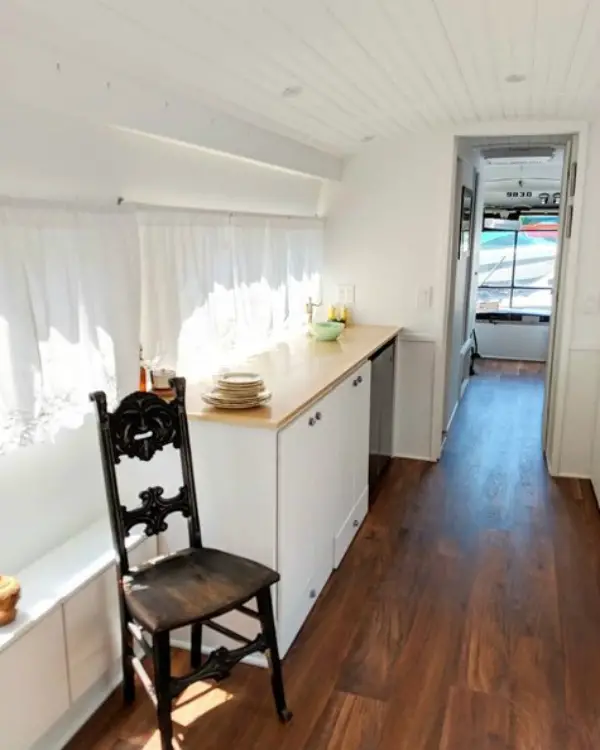
Jessie specifically choosed to not have a television onboard. She had the idea that she could be surrounded by nature and it would be the source of entertainment she needed. She could find happiness in the simple things like waking up to bird sound outside her window. She designed her home with her portable items that meant something to her and in this way she choosed spiritual value instead of material items.
22. A Look Into Past
Jessie could not be more proud than that. She had learned new skills like construction when she had helped build the countertops in the kitchen. Although everything was perfect, Jessie had made a final touch that was absolutely spectacular.
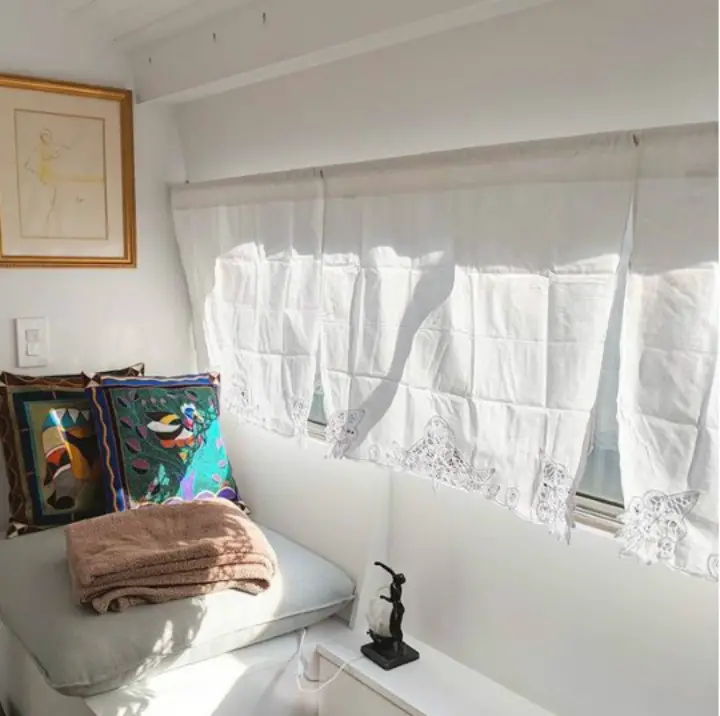
At the end Jessie felt several regrets about the project that had been her brainchild. Especially Jessie realized that she had been so busy and focused on completing her project that she wasn’t able to read as much as she would have liked. And finally, though she was satisfied with the home that she had created, she would again repurpose the converted bus.
23. Parting Ways
After completing the project of lifetime, Jessie had plenty of time to enjoy its benefits and great outdorrs. After all the work for converting the bus into a mobile home which was a dream for her, she decided to sell it.
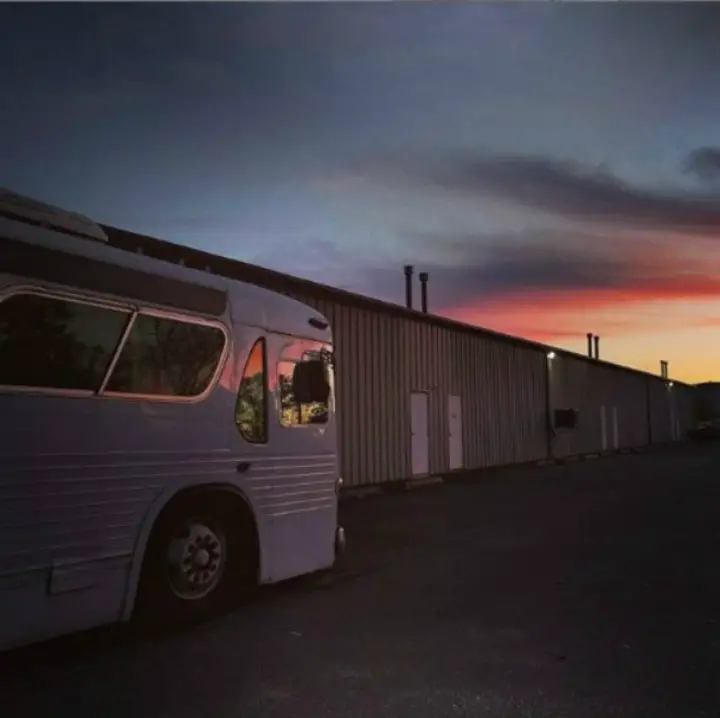
The bus was put up for sale on Craigslist, listed at $149,000, with 100,000 miles on it. Jessie figured out that even this tiny home was simply too much for her. But thanks to the cozy and luxurious space she had created, the converted bus was about to enter a new chapter in its life.
24. Bus Bed And Breakfast
The converted bus had its fair share of adventures from its original placen in California to the site of rebirth in Asbury Park, New Jersey. Nowadays, it has found a new adventure; it has nestled in the amazing desert scenery of Joshua Tree National Parl in eastern California.
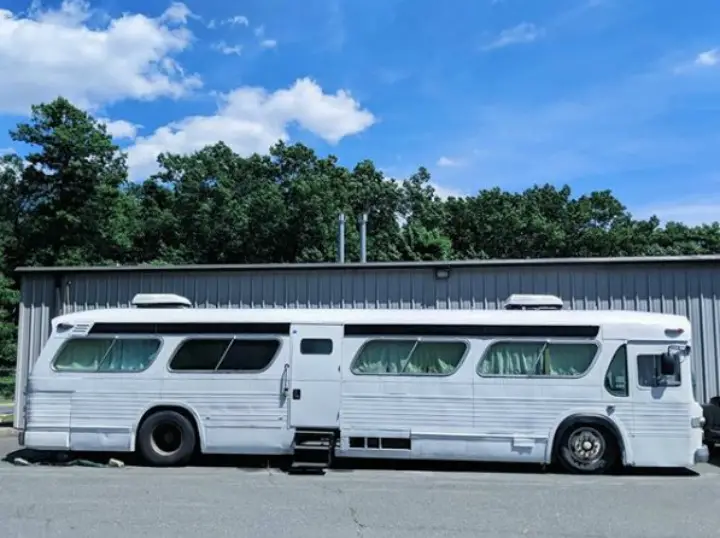
The tiny home that Jessie created, is being rented out as an Airbnb for desert travelers and guests. Thanks to Jessie's vision, the space can host up to four people, making for the perfect desert gateaway. We think that this bus is charming but of course not everyone is a fan.
25. On The Road
Although the concept of designing a mobile home and getting away from the citty was appealing to Jessie Lipskin, she is opting to take that lifestyşe a step further. Nowadays, she is employed in a company that allows her to work remotely. And she intends to take full advantage of that chance.
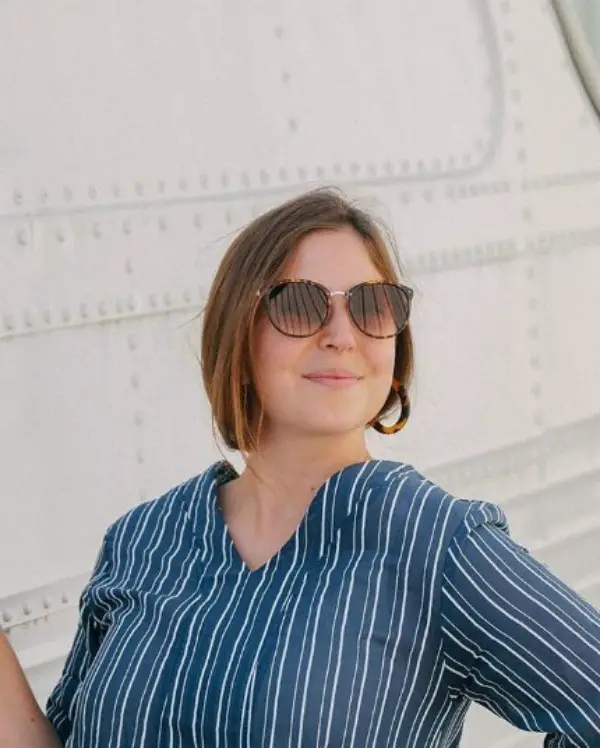
She is looking to fo abroad for a little while and work as she travels. She is 30 years old but she does not want to feel tied down by responsibility. She wants to travel and explore as a free woman. It is the same principle that guided her while building her tiny home: utilizing her freedom to the max.
Sources: Instagram – The Bus Tiny Home, Insider